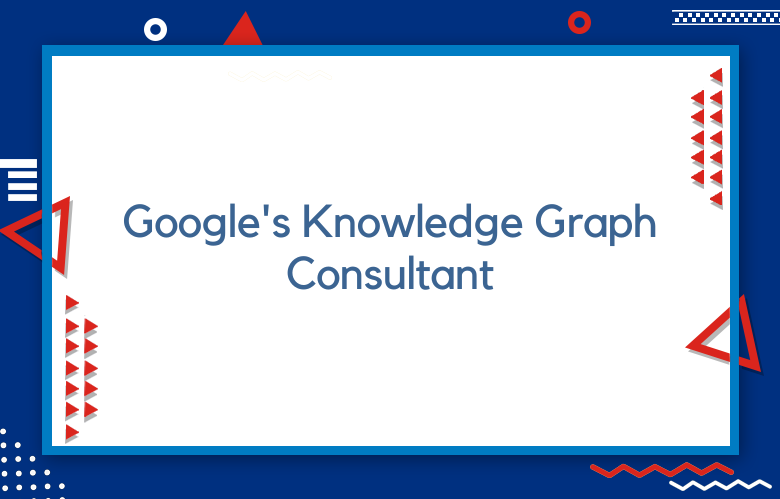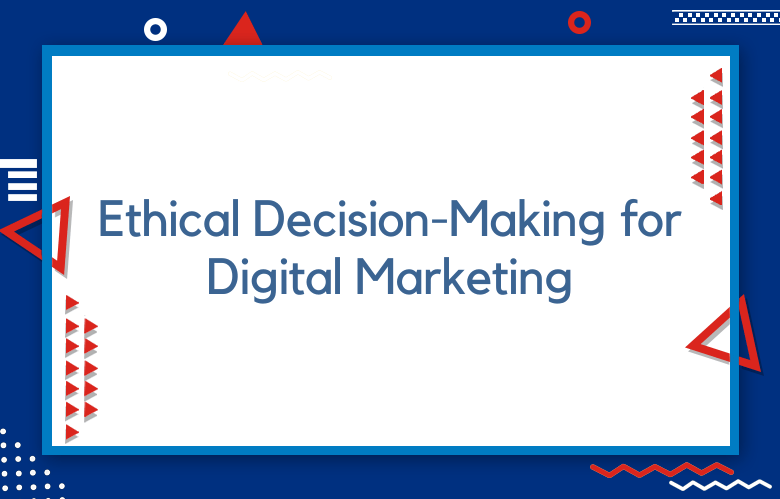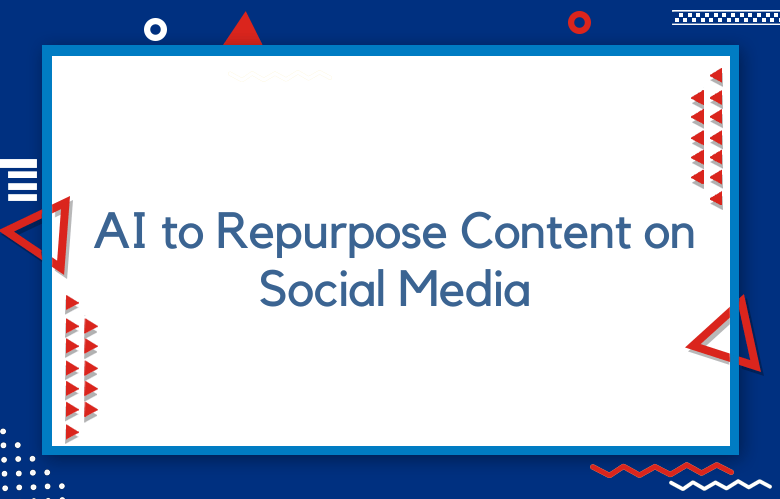Google’s Knowledge Graph Consultant

- Key Takeaways
- Understanding Google’s Knowledge Graph
- How the Knowledge Graph Works
- Sources of Knowledge Graph Information
- Common Issues with Knowledge Graph
- Correcting or Removing Information
- Requesting Changes to Knowledge Panels
- Reporting Inaccurate or Non-representative Data
- Knowledge Graph Policies and Guidelines
- Final Remarks
- Frequently Asked Questions
- What is Google’s Knowledge Graph?
- How does the Knowledge Graph work?
- Where does the Knowledge Graph get its information?
- What common issues arise with the Knowledge Graph?
- How can I correct or remove incorrect information?
- How do I request changes to my Knowledge Panel?
- What are the policies regarding the Knowledge Graph?
Navigating the digital landscape can be challenging. Many businesses struggle to stand out on the competitive edge. That’s where a Google Knowledge Graph consultant comes in. This expert helps you leverage Google’s powerful tools to boost your online presence.
With their guidance, your brand can gain visibility and trust. Unlike generic strategies, a tailored approach focuses on your unique needs. You’ll connect better with your audience and enhance search results. A consultant not only improves your SEO but also enriches the user experience. Don’t let your competitors outshine you. Embrace the power of the Knowledge Graph and watch your business thrive.
Key Takeaways
- Understand the basics of Google’s Knowledge Graph better to leverage it for your business or personal brand.
- Familiarize yourself with how the Knowledge Graph works, including how it gathers and organizes information.
- Identify reliable sources of information to ensure your data is accurately represented in the Knowledge Graph.
- Be aware of common issues that may arise, such as outdated or incorrect information affecting your visibility.
- Learn to correct or remove inaccurate information, ensuring your Knowledge Panel reflects the correct data.
- Follow Google’s policies and guidelines to maintain compliance and enhance your chances of being featured accurately.
Understanding Google’s Knowledge Graph
Definition
The Google Knowledge Graph is a database that organizes factual information about entities, such as people, places, or things. This structure helps Google understand the context behind search queries.
Knowledge graphs use a unique representation of information. They show how different entities relate to each other. For example, searching for “Eiffel Tower” will also link to Paris and France. This connection provides users with a broader understanding of their search.
Role in Search Results
The knowledge graph significantly enhances search results and quickly answers user queries. When someone searches for a specific entity, Google displays relevant information immediately, including images, summaries, and related entities.
For instance, if you search “Albert Einstein,” you might see his birth date, achievements, and even a photo. This feature saves time and improves user experience. Instead of sifting through multiple links, users get the essential information upfront.
Importance of Connections
Connections within the knowledge graph further improve user experience. By linking related information, Google helps users discover more about their interests. For example, if you look up “Leonardo da Vinci,” you might also find links to “Mona Lisa” or “Renaissance.”
These connections enrich the search experience. Users can explore various topics without needing separate searches, and the knowledge graph encourages curiosity and deeper exploration.
Knowledge Graph Search API
The Google Knowledge Graph Search API allows developers to access this data programmatically, integrate knowledge graph features into their applications, and quickly retrieve entity details.
This tool is beneficial for creating apps that require quick access to factual data. Businesses can enhance their services by leveraging the knowledge graph’s capabilities.
New Cloud Products
In 2023, Google introduced the new cloud enterprise knowledge graph product. This product aims at businesses wanting to utilize knowledge graphs for their operations. It allows companies to create custom knowledge graphs tailored to their needs.
The cloud knowledge graph offers advanced features for managing large data sets. This technology allows organizations to connect various data sources efficiently.
How the Knowledge Graph Works
Information Retrieval
Google’s knowledge graph algorithm plays a crucial role in retrieving information. It analyzes search queries to find relevant data quickly. When users type questions, the algorithm scans its vast database of facts and entities, helping surface the most pertinent information.
The knowledge graph pulls from various sources, including websites, databases, and user-generated content, to view topics comprehensively. For example, if someone searches for “Eiffel Tower,” the algorithm identifies critical facts about its height, location, and history.
Answering Questions
Google uses the knowledge graph to answer factual questions directly. The system recognizes relationships between different entities. For instance, if you ask about famous scientists, it links Albert Einstein to physics and relativity.
When a query is made, the knowledge graph checks its connections. It retrieves related information efficiently. This method allows Google to provide answers without needing users to click through multiple pages.
For example, asking, “Who wrote Hamlet?” results in a quick answer with William Shakespeare’s name and birthdate. This instant response saves time for users.
Presenting Useful Data
The goal of the knowledge graph is to discover and present valid factual data. It also aims to enhance user experience during searches by organizing complex information into simple formats, making learning more accessible.
Users often see snippets of information on their screens. These snippets may include images, definitions, or summaries. They offer quick insights without requiring more profound research.
The knowledge graph also updates regularly. Google continuously adds new data from trusted sources, keeping the information fresh and relevant for users.
Enhancing Search Experience
With the knowledge graph, search experiences become more intuitive. Users can find what they need faster, and the algorithm understands context better now than in earlier search systems.
For instance, someone searching for “Apple” might want information about the fruit or the tech company. The knowledge graph can differentiate between these meanings based on additional terms in the query.
This ability to connect things enhances user satisfaction. People receive results that align closely with their interests and needs.
Sources of Knowledge Graph Information
Public Sources
Public sources, such as websites, databases, and open datasets, provide a wealth of knowledge graph information. Wikipedia is one of the most notable contributors. It offers structured data that Google uses to enhance its Knowledge Graph. Other public sources, like government databases, also add valuable facts.
ial media platforms contribute, too. They generate a lot of user-generated content. This information can help build a more accurate knowledge base. User interactions on these platforms often reflect current trends and events.
Licensed Data
Licensed data plays a significant role in the accuracy of knowledge graph data. Companies often partner with data providers to access specialized information, including enterprise-level data that may not be publicly available. For example, licensed databases from organizations like Thomson Reuters or LexisNexis offer precise legal and financial data.
These partnerships ensure that the Knowledge Graph remains up-to-date. They provide verified information that users can trust, helping Google maintain an accurate knowledge graph.
Content Owners’ Role
Content owners are crucial for maintaining an accurate knowledge graph. They provide original content and factual updates about their entities. Businesses, authors, and organizations submit their information directly to Google, which allows them to control how they appear in search results.
Content owners help improve the reliability of the Knowledge Graph by providing precise and correct details. Regular updates from these owners keep the information fresh and relevant. This collaborative effort enhances user experience by delivering accurate data.
User Suggestions
User suggestions are another way to enhance the Knowledge Graph’s accuracy. Users can report errors or suggest changes to existing entries. This feedback loop allows for constant improvement in the knowledge base.
Users can submit corrections through Google’s feedback options when they notice inaccuracies. Google’s team reviews these suggestions for validity. If approved, they lead to updates in the Knowledge Graph.
This process shows how community involvement can shape the quality of online information. User engagement helps create a more robust database that reflects real-world knowledge.
Common Issues with Knowledge Graph
Inaccuracies
Many users encounter inaccurate information in the Knowledge Graph. This can happen for various reasons. Sometimes, data sources are outdated or incorrect. Other times, the algorithms may misinterpret the data. For example, a famous actor might be listed with the wrong birth date. Such inaccuracies can lead to confusion among users.
Searches often yield conflicting information. Users might see different facts about the same entity from various sources. This inconsistency can make it hard to trust the Knowledge Graph. People who rely on this tool for quick answers expect accurate results.
Management Challenges
Entities face challenges in managing their representation within the Knowledge Graph. They must ensure that their information is correct and up-to-date. However, they have limited control over how their data appears. Google’s vast database pulls from many sources, making it difficult for entities to track what is displayed.
Organizations often struggle to update their information effectively. They may need to submit requests to Google but wait for approval, which can be slow and frustrating. As a result, some entities may find outdated or incorrect details remain visible for too long.
Public Perception
Incorrect data can significantly impact public perception and entity reputation. If a company has the wrong information listed, customers might lose trust. For example, if a restaurant’s hours are incorrect, potential customers may not visit. This situation can lead to lost revenue and damage to the brand.
Reputation management becomes crucial when dealing with knowledge inaccuracies. Entities must regularly monitor how they are represented in the Knowledge Graph and respond quickly to any discrepancies in their listings.
Correcting or Removing Information
Automated Processes
Google uses automated processes to manage its massive search data. These systems constantly analyze and update information, track changes in data sources, and assess their reliability. Algorithms evaluate the accuracy of facts presented in the Knowledge Graph.
This automation allows Google to handle billions of data points efficiently. It helps ensure that users receive up-to-date and relevant information. However, these processes are not perfect. Sometimes, incorrect details still appear in search results.
Public Reporting Systems
Public reporting systems play a crucial role in maintaining the integrity of Knowledge Graph information. Users can report inaccuracies they encounter. This feedback is vital for correcting errors quickly. Google reviews these reports to determine if changes are necessary.
The public’s involvement helps Google maintain high-quality data. Reports can highlight outdated or false information. This system encourages users to engage with the content actively. It fosters a sense of community responsibility regarding shared knowledge.
Manual Removal Criteria
Manual removal of content occurs under specific criteria set by Google. Content that violates Google’s policies can be removed from the Knowledge Graph. Examples include misinformation, hate speech, or harmful content.
When users report such violations, Google investigates the claims thoroughly. If the evidence supports the removal, swift action is taken. The goal is to uphold factual information and protect users from misleading data.
The process involves multiple steps. First, Google assesses the validity of the report. Next, they verify whether the content indeed breaches their guidelines. Finally, they remove or correct the flagged information as needed.
Importance of Accuracy
Accuracy in the Knowledge Graph affects how users perceive information online. Incorrect details can mislead people and create confusion, so Google prioritizes keeping its data accurate and reliable.
Users depend on this tool for quick access to facts and figures. Therefore, Google must act promptly against misinformation. The combination of automated processes and user reporting helps achieve this goal.
Requesting Changes to Knowledge Panels
Claiming Panels
Official representatives can claim their knowledge panels. This process starts with verifying your identity. Google requires proof that you are connected to the entity represented in the panel. You can do this by filling out a form on Google’s support page. This form asks for specific details about your role and how you relate to the subject of the panel.
Once submitted, Google reviews the request. If approved, you gain access to make changes. These changes can include updating images, descriptions, and other relevant content. It’s crucial to provide accurate information. Incorrect details can lead to rejection or further issues.
Submitting Feedback
Users often notice issues with knowledge panels. To address these problems, submitting feedback is essential. Google provides an option directly on the knowledge panel itself. Users will click on the “Feedback” link at the panel’s bottom. This opens a form where you can describe the problem.
When reporting issues, it’s important to be clear and concise. Include specific examples of what is incorrect or outdated. The more detailed your feedback, the better the chance it will be reviewed. Google takes user input seriously and often makes adjustments based on this feedback.
Addressing Discrepancies
Searchers may find discrepancies within their personal knowledge panels or other panels related to places and people. Users should not hesitate to use the available feedback options. Reporting inaccuracies helps improve overall search results.
To address discrepancies effectively, follow these steps:
- Locate the knowledge panel where you see an error.
- Click on the “Feedback” link.
- Fill out the form with clear information about the issue.
- Submit your feedback and wait for a response from Google.
This process allows users to take an active role in maintaining accurate information online.
Importance of Accurate Information
Accurate content in knowledge panels is vital for both searchers and entities represented in those panels. It builds trust with users searching for reliable information, and for businesses or individuals, having correct details can enhance visibility and credibility.
Knowledge panels are dynamic and frequently change based on new data or user feedback. Keeping them updated ensures that searchers receive relevant information swiftly.
Reporting Inaccurate or Non-representative Data
Reporting Process
Users can report inaccuracies in the Knowledge Graph through specific public reporting systems. These systems allow individuals to submit feedback directly to Google. To start, find the Knowledge Panel that shows incorrect information. Click on the “Feedback” at the bottom of the panel.
After selecting “Feedback,” users should clearly describe the issue. Mention what is inaccurate and why it matters. This helps Google understand the problem better. Providing links to reliable sources can support your claim. Accurate reporting ensures that factual data is corrected promptly.
Required Details
When submitting a report, specific details are necessary for adequate review. Users should include:
- The exact name or title of the entity.
- The particular piece of information that is incorrect.
- A brief explanation of why it is wrong.
- Links to credible sources that verify the correct data.
These details help Google evaluate the claim quickly. Without clear information, requests may take longer to process. Users should be as specific as possible to enhance clarity and accuracy.
Importance of Accuracy
Accurate representation in the Knowledge Graph is crucial for public trust. Billions of people rely on this information daily. Misinformation can lead to misunderstandings and confusion. For example, if a company’s founding date is incorrect, it could mislead investors and customers.
Furthermore, accurate data supports informed decision-making. Users expect reliable results when searching for facts about a person or place. If incorrect information appears, it undermines confidence in Google’s services.
Feedback Impact
Users’ feedback plays a vital role in improving the Knowledge Graph. Each report contributes to refining the data presented. Google uses this feedback to adjust and update its systems continuously. As more users report inaccuracies, the overall quality of information improves.
For instance, when someone reports an error about a historical event, it prompts a review process. This can lead to updates in how events are displayed in search results. The cycle of reporting and correcting helps create a more accurate database.
Sample Searches
Conducting sample searches can also highlight inaccuracies in Knowledge Graph data. Users should regularly check their profiles or notable figures they follow. If discrepancies arise, reporting them becomes essential.
Knowledge Graph Policies and Guidelines
Display Policies
Policies guide how information appears in the Knowledge Graph. Google aims to provide accurate and relevant data. It uses algorithms to decide what content is displayed. These algorithms evaluate the reliability of sources. They prioritize information from credible websites.
Each knowledge graph entry must meet specific criteria, including factual accuracy and relevance to users’ searches. Misleading or incorrect data can lead to confusion, so Google has strict rules against such content.
Guidelines for Accuracy
Specific guidelines help prevent the spread of false information. Google encourages users to report inaccuracies. This feedback improves the system over time. The company reviews reported issues carefully. If a problem is confirmed, it takes action quickly.
Guidelines also focus on presenting diverse perspectives. This helps avoid bias in search results. For example, when a user searches for a person, the knowledge graph panel should reflect different viewpoints about that person’s life and achievements.
Maintaining High Standards
Google is committed to high standards of accuracy and reliability. The company regularly updates its knowledge graphs to reflect new information, ensuring users receive the best search results.
Content analytics plays a crucial role in this process. They help Google understand what users find helpful or misleading. By analyzing user interactions, Google can continuously improve its systems.
Scale Knowledge Infrastructure
Scaling knowledge infrastructure is vital for maintaining quality. Google invests in advanced technologies to support this growth, including enhancing algorithms that filter out low-quality content.
The aim is to provide a seamless experience for users searching for information about people, businesses, or events. A well-structured knowledge graph helps link related topics effectively.
User Engagement
User engagement is another critical factor in maintaining data quality. Google encourages users to interact with knowledge graphs by leaving feedback on entries. This interaction provides valuable insights into user needs and preferences.
Businesses can also claim their business profile in the knowledge graph. This allows them to manage how they are represented online.
Final Remarks
Understanding Google’s Knowledge Graph is essential for anyone wanting to boost their online presence. You’ve learned how it works, its information sources, and how to address common issues. Correcting inaccuracies in your Knowledge Panel can significantly enhance your visibility and credibility.
Take charge of your digital footprint. Regularly check your Knowledge Graph information and follow the guidelines to ensure it accurately represents you. If you notice discrepancies, don’t hesitate to report them—your online reputation matters. Start engaging with your Knowledge Graph today for a more robust online identity.
Frequently Asked Questions
What is Google’s Knowledge Graph?
Google’s Knowledge Graph is a system that enhances search results with structured information about people, places, and things. It helps users get relevant information quickly and easily.
How does the Knowledge Graph work?
The Knowledge Graph uses algorithms to gather data from various sources. It organizes this information into entities, allowing Google to provide concise answers and rich snippets in search results.
Where does the Knowledge Graph get its information?
The Knowledge Graph sources data from trusted websites, Wikipedia, public databases, and user-generated content. This diverse range of sources ensures accuracy and comprehensiveness.
What common issues arise with the Knowledge Graph?
Common issues include outdated information, inaccuracies, or missing data. Users may also find that their knowledge panels do not reflect recent changes or developments.
How can I correct or remove incorrect information?
To correct or remove information, you can submit a request through Google’s feedback options on the Knowledge Panel. Provide precise details and supporting evidence for your claim.
How do I request changes to my Knowledge Panel?
To request changes, locate your Knowledge Panel in Google Search and click “Suggest Edits.” Follow the prompts to submit your corrections or updates.
What are the policies regarding the Knowledge Graph?
Google has strict policies for maintaining the integrity of the Knowledge Graph. These guidelines ensure that only accurate and reliable information is presented to users, promoting trustworthiness in search results.



